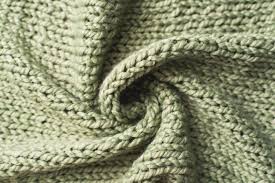Winter Fabric Trends for 2025: What’s Hot When It’s Cold

As temperatures drop and layering becomes essential, the spotlight turns to winter fabrics—those cozy, insulating materials that define both comfort and style during the cold months. Winter 2025 is bringing a fresh wave of innovation, sustainability, and sensory appeal to the world of fashion and textiles. Whether you’re a designer, manufacturer, or a fashion-forward shopper, understanding the latest trends in winter fabric can help you stay ahead of the curve.
1. Sustainable Textiles Take Center Stage
Sustainability is no longer a buzzword—it’s a requirement. In 2025, eco-conscious consumers are demanding fabrics that not only keep them warm but also minimize environmental impact. Expect to see a rise in organic wool, recycled polyester blends, and plant-based fleece options. These materials are being engineered for better durability, thermal insulation, and biodegradability.
Brands are also investing in closed-loop production systems, where materials are reused and repurposed without waste. Look for certifications like GOTS (Global Organic Textile Standard) and OEKO-TEX, which signal sustainable and ethical production. These options are redefining what it means to be fashionable and responsible during the winter months.
2. Thermal Tech: Smart Insulation Materials
One of the most exciting trends in winter fabric is the integration of smart textiles—materials engineered to provide superior warmth without bulk. In 2025, expect to see continued use of phase-change materials (PCMs), which absorb, store, and release heat based on your body temperature. These fabrics adjust dynamically, making them perfect for outdoor enthusiasts, athletes, and everyday urban wearers.
Additionally, graphene-infused fibers are making headlines. Known for their strength and thermal conductivity, these ultra-thin materials offer excellent heat retention while maintaining breathability. They’re showing up in everything from jackets to gloves, offering lightweight protection against the cold.
3. Tactile Comfort: Softness Meets Structure
As the demand for comfort continues to rise post-pandemic, consumers are gravitating toward tactile-friendly fabrics that offer a sensory experience. Think brushed cotton, cashmere blends, sherpa fleece, and micro-suede—materials that feel as luxurious as they look.
These fabrics are not just soft—they also provide structure, making them perfect for outerwear, scarves, and winter accessories. The emphasis is on comfort without compromise, and brands are responding with tailored pieces that hug the body while offering freedom of movement.
4. Color and Texture Come Alive
Winter fashion no longer means muted palettes. In 2025, winter fabric selections are embracing bold textures and vibrant hues. From crushed velvet in jewel tones to quilted knits with 3D textures, designers are experimenting with visual appeal alongside functional warmth.
Textural play is also trending—expect to see mixed materials like wool-leather hybrids, felted textures paired with silk trims, and tactile layering using boucle, tweed, and corduroy. These combinations are breathing new life into classic winter silhouettes, adding dimension and sophistication.
5. Heritage Fabrics with a Modern Twist
Timeless materials like tweed, flannel, and woolen herringbone are making a strong comeback—reimagined with modern cuts and updated weaves. These fabrics, often associated with British and Scottish fashion history, are being integrated into contemporary styles like oversized coats, tailored trousers, and streetwear-inspired jackets.
What makes these heritage fabrics stand out in 2025 is the way they’re being treated: pre-washed for softness, blended with synthetic fibers for stretch, or dyed with natural pigments to enhance their eco-friendliness. The result? A nostalgic yet forward-thinking take on winter fashion.
6. Performance Meets Fashion
The line between fashion and function continues to blur. Today’s consumers expect their winter wear to perform—offering weather resistance, windproofing, and moisture-wicking properties—without sacrificing aesthetics. Fabrics like softshell, water-resistant nylon, and laminated wool blends are gaining traction for their dual ability to look good and protect against the elements.
Additionally, many brands are incorporating antibacterial and anti-odor finishes, responding to the increasing demand for hygiene in clothing. These performance-based innovations are particularly popular in activewear and commuter fashion, where practical elegance is key.
7. Layering Essentials: Lightweight and Breathable
While thick coats remain essential, the layering trend is steering consumers toward lightweight, breathable winter fabrics that can be stacked or removed with ease. Materials like merino wool, bamboo fleece, and modal blends are ideal for thermal layering without bulk.
These fabrics not only regulate temperature but also wick away moisture—making them perfect for dynamic lifestyles. Whether it’s a thermal base layer or a chic knit pullover, layering-friendly textiles are must-haves this season.
Final Thoughts
The winter fabric landscape in 2025 is more diverse, innovative, and sustainable than ever before. From smart insulation technologies to plush, tactile materials, this year’s trends highlight a fusion of comfort, performance, and responsible production. Whether you’re dressing for the slopes or the sidewalk, investing in the right winter fabric ensures you’re both stylish and prepared when the chill sets in.





